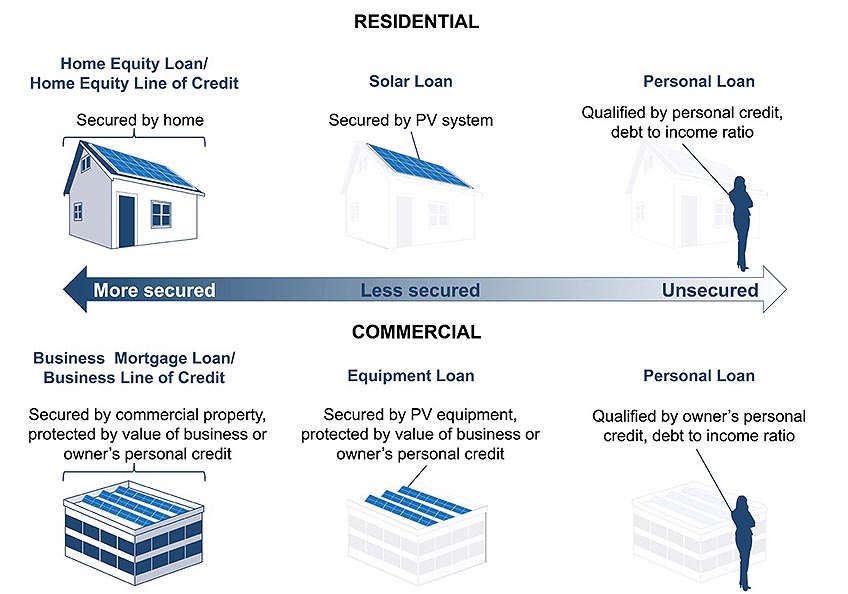Community Banks and Credit Unions Report Success with Solar Loans, NREL Report Finds
A new NREL report finds that a sample of 22 community and regional financial institutions (CRFIs), such as community banks and credit unions, are experiencing positive early performance of loans for photovoltaic (PV) systems.
These findings, based on interviews and financial data collected from CRFIs across the United States, are presented in the NREL report Solar Lending Practices by Community and Regional Financial Institutions. The report examines the experiences of CRFIs that have developed and launched PV loan products, and it describes the evolution of PV loans and their performance. The report also identifies data gaps that if addressed could support further development of these financial products.

NREL researchers interviewed 20 PV loan experts at 14 CRFIs or related institutions to identify trends in this emerging solar lending market. Initially, many of the interviewed CRFIs had created PV loan products in response to requests by customers or members. All the CRFIs interviewed by the NREL researchers reported positive results from their PV loan portfolios, with no portfolio-wide issues or systematic concerns. Reportedly, many CRFIs are considering offering a greater volume of PV loans based on their high repayment performance so far, though it should be noted that, to date, most PV loan recipients have had relatively good credit scores.
Very Few PV Loans Show Poor Performance
The NREL researchers also collected and studied a dataset of high-level information from 6,770 PV loans, which represents a combined PV loan sample exceeding $186 million in lending across 22 different CRFIs. Only 12 of the 6,770 loans—or less than 0.2%—were reported as a charge-off or unlikely to be repaid. However, most PV loan programs are young, with many loans very early in their term, and warrant continued tracking.
The report’s authors note that access to additional credit and market information will be critical to accelerate the role of CRFIs and other financial institutions in increasing the total amount of capital available for PV projects. As a young asset class, PV loans currently lack the higher-fidelity loan performance and borrower credit data offered by more mature asset classes. The industry could also benefit from more information on PV financing providers across different markets and covering areas such as the technical evaluation of PV equipment, assessment of industry risk profiles, and characterization of various PV financing products.
Webinar to Discuss Report
To learn more about the report from its authors and hear from a panel of stakeholders from several CRFIs that offer PV loans, register to attend an NREL-hosted webinar on Aug. 22.

